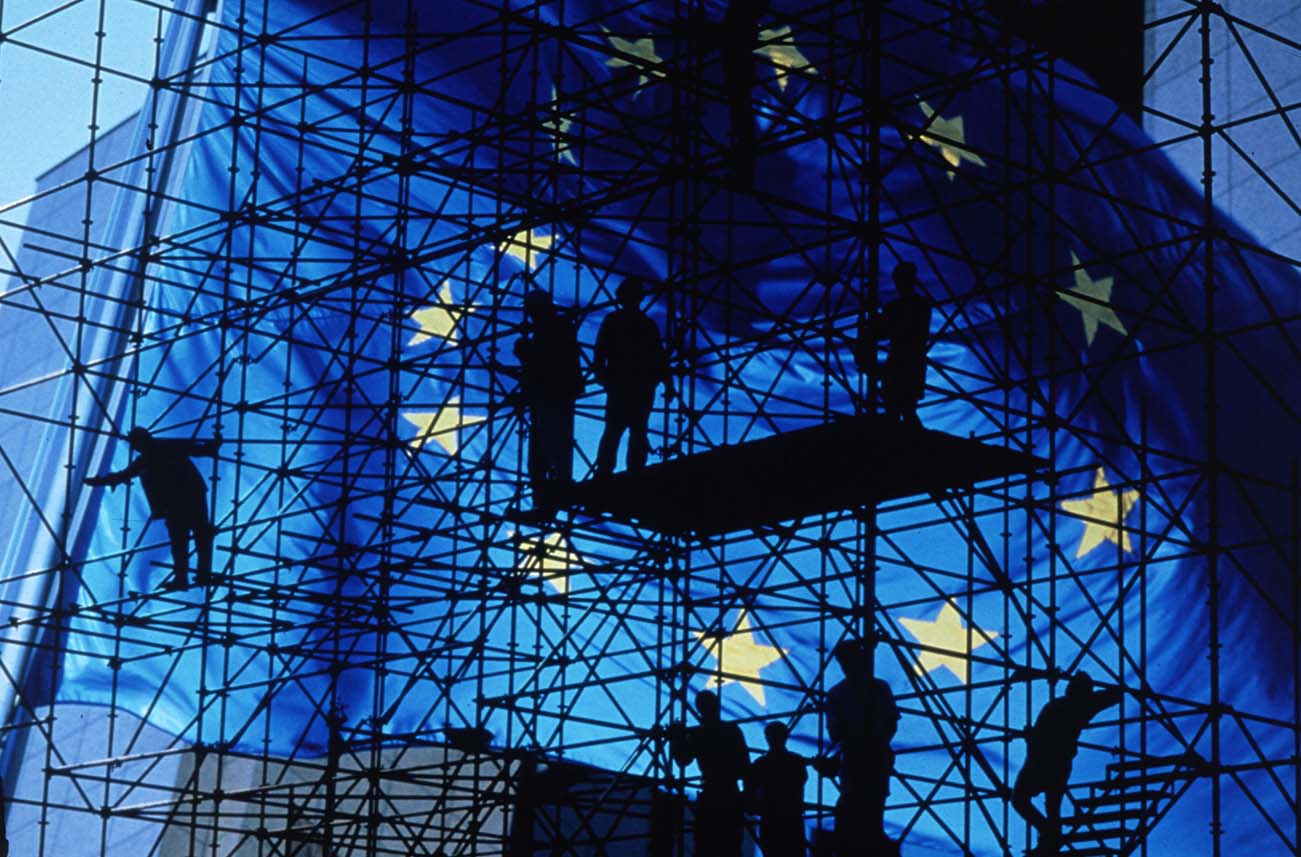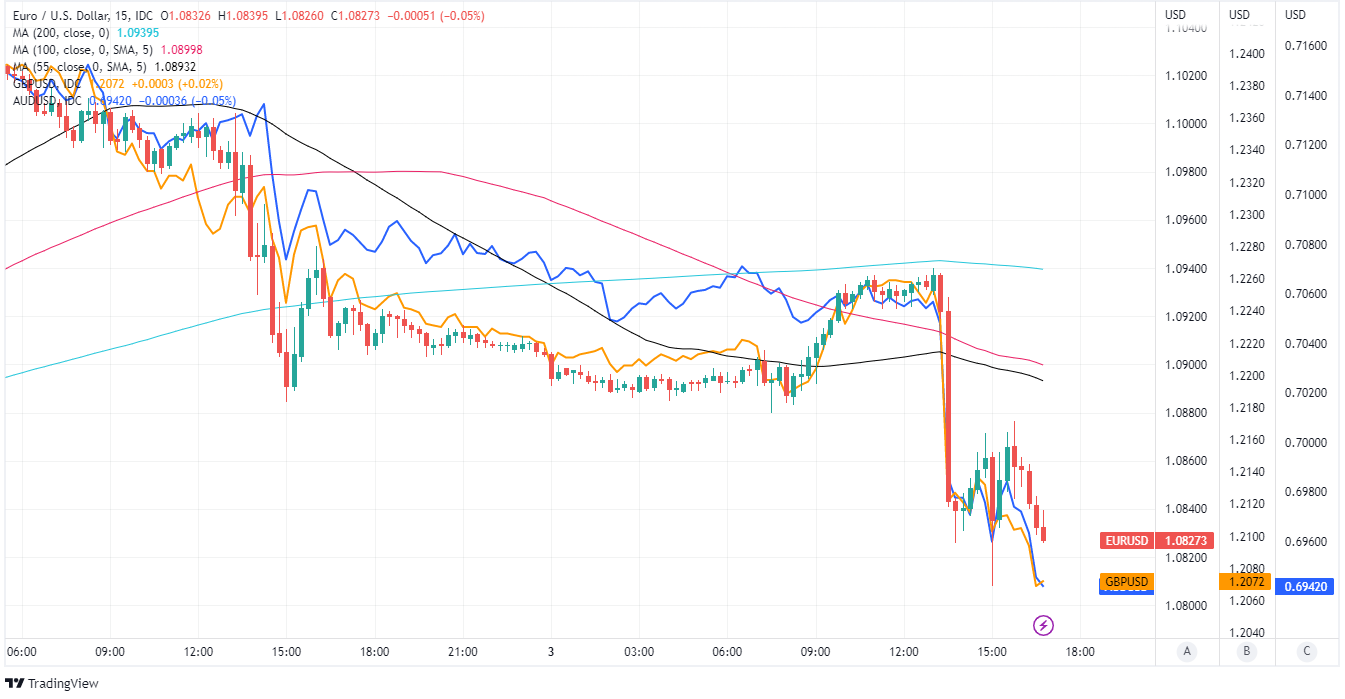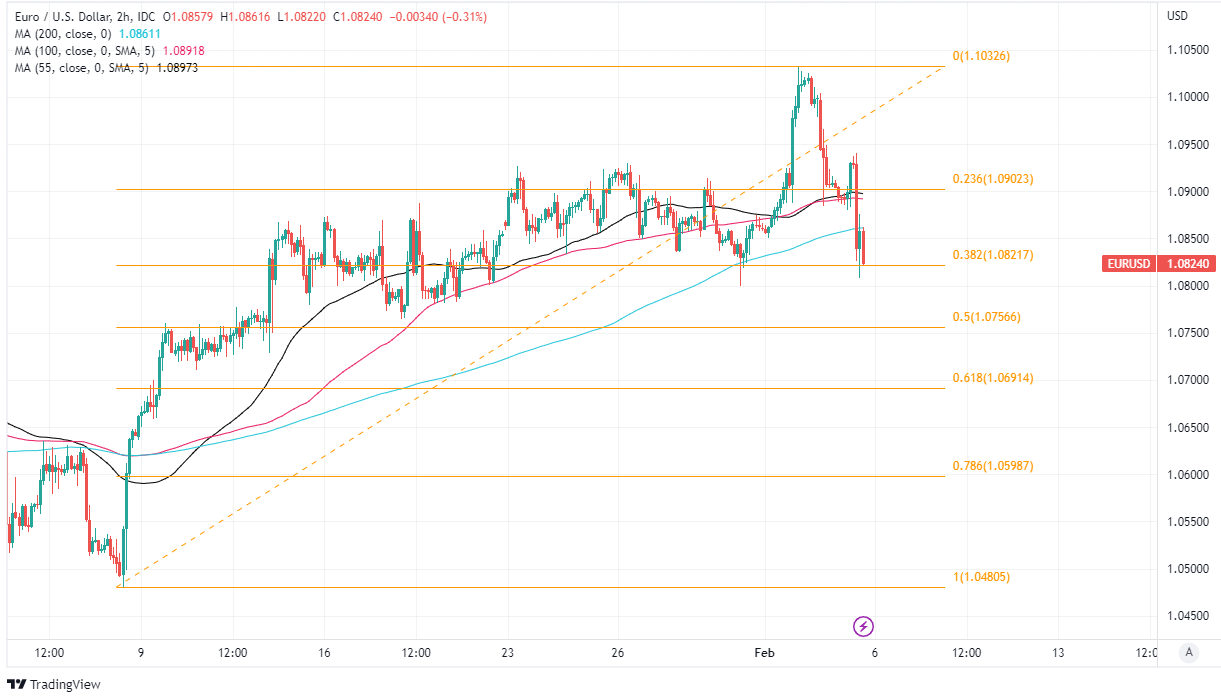EUR/USD Retains Upward Bias Above 1.08 Says TD Securities
"We think FX needs more than just this payrolls number to be convinced of a turning tide in the prevailing bias of short USD (although we think this trade is fatigued for now)" - TD Securities.

Image © European Commission Audiovisual Services
The Euro to Dollar exchange rate tumbled ahead of the weekend but would likely retain an upward bias for as long as it remains above the nearby 1.08 handle and could as fall as far as 1.06 following any loss of the aforementioned level, according to TD Securities.
Europe's single currency remained one of the top-performing majors on the market this Friday even as it fell by three-quarters of a percent against the Dollar following a bounce in the U.S. Institute for Supply Management (ISM) Services PMI and blowout non-farm payrolls report for January.
The ISM measure of activity in U.S. services rose back to long-term average levels that are consistent with normal growth across the sector while the job report was the strongest since that covering July 2022 and came alongside upward revisions to earlier estimates of employment growth.
"A +300k upside surprise on payrolls should be a significant pain trade for non-USD FX. And while that has played out in some currencies thus far, it seems rather contained on a broader basis given the magnitude of the surprise," says Mazen Issa, a senior FX strategist at TD Securities.
 Above: Euro to Dollar rate at 15-minute intervals alongside GBP/USD and AUD/USD. Click image for closer inspection.
Above: Euro to Dollar rate at 15-minute intervals alongside GBP/USD and AUD/USD. Click image for closer inspection.
"Case in point is EURUSD still holding just below a 1.09 handle at the time of writing rather than an outright capitulation. We see 1.08 as rather important support that would open 1.06 should it fail to hold. But that seems less convincing at the moment," Issa writes in a Friday research briefing.
Friday's data follows a Wednesday increase in the Federal Reserve (Fed) interest rate from 4.5% to 4.7%, which was the smallest increase since March last year and was followed by an acknowledgment from Chairman Powell that there might be as little as "a couple" more increases of that size left to go.
It also comes in the wake of a larger Thursday increase in the European Central Bank (ECB) interest rate and a warning from President Christine Lagarde that a 0.5% March increase in interest rates is likely to be followed by additional steps of an undetermined size over subsequent months.
"We think FX needs more than just this payrolls number to be convinced of a turning tide in the prevailing bias of short USD (although we think this trade is fatigued for now)," Issa writes.
"We are mindful of a counter-trend bounce in the USD, but FX seems more of a hot mess at the moment," he writes in a Friday research briefing," he adds.
 Above: Euro to Dollar rate shown at 2-hour intervals with Fibonacci retracements of 2023 rally indicating possible areas of technical support for Sterling. Click image for closer inspection.
Above: Euro to Dollar rate shown at 2-hour intervals with Fibonacci retracements of 2023 rally indicating possible areas of technical support for Sterling. Click image for closer inspection.
The Euro corrected lower following the ECB decision but rallied in the wake of Wednesday's Fed decision, which saw Chairman Jerome Powell suggest there might be as little as "a couple" more rate increases left to go in the U.S.
That detail may have been over-egged by media and in markets, however, as Chairman Powell was also clear that interest rate risk remains on the upside of December's suggestion that borrowing costs could peak between 5% and 5.25% early this year.
Markets have continued to wager that the Fed has effectively finished raising interest rates, however, and those bets became more expensive on Friday.
"I think we're going to be looking carefully at the incoming data between now and the March meeting and then the May meeting. I don't feel a lot of certainty about where that [peak] will be," Chairman Powell said at the press conference.
"I do think that in this situation where we have still the highest inflation in 40 years, the job is not fully done. As I mentioned -- started to mention earlier, we have a sector that represents 56% of the core inflation index, where we don't see disinflation yet," he added in response to a question from the FT.